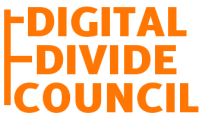How to Bridge the Digital Divide
The digital divide is the discrepancy existing between different demographics on access to information technology. These populations can have unlimited, good enough, or inadequate access to IT. In this context, information technology encompasses the internet, computers, telephones, and televisions. Also falling under this bracket are any other gadgets related to information technology.
The digital divide also captures the ability of different populaces to leverage the internet, and various gadgets. Both governmental and private institutions, globally, have been fighting to narrow this divide.
The digital split arises from a plethora of social, geographic, and economic factors. Consequently, the cleave yields various penalizing consequences to the negatively affected population. The most severe percussions include social and economic exclusions of the affected populace.
How can we bridge the digital divide?
As societies, we are faced with the hard question of ‘how do we bridge the digital divide?’ A menace which we should address as persons, communities, nations, and the world as a whole. Various initiatives we need to engage to narrow the digital gap under the various mentioned capacities include:
1. Increase digital literacy
We have for such a long time had a narrow view of what digital literacy entails. Basically, most stakeholders confuse digital literacy and computer literacy. Computer literacy is the ability to use a computing device, together with its associated hardware and software components, and the internet.
Currently, there is no universally accepted definition of digital literacy. However, most entities agree that includes but not limited to computer, information, social media and network literacy.
Understanding and implementing socio-economic, cultural, political, and behavioral aspects of digital literacy. Having good knowledge, skill, attitude, and behaviour towards networked devices. And, possession of both practical hardware and software skills.
Thus, in order to bridge the digital divide, we must improve our digital literacy capacities based on the above-listed parameters. Societies should come up with programmes to address the existing deficiencies across various age groups.
2. Provide operational incentives to information and communication technology entities
There are various organizations fighting hard to narrow the digital divide. Sometimes, existing Laws and financial barriers thwart such efforts. Providing incentives relieves the burden encountered by such institutions. This responsibility especially lies with the existing governments.
A good example is a non-governmental institution focused on teaching SMEs how to integrate computing into their operations. A well-wishing government will chip in by minimizing the tax obligations of such institutions.
3. Develop relevant and local content in addition telecommunications infrastructure
As individuals and communities, it is easier to learn and put in place concepts that we relate with. And how does this make it possible to bridge the digital divide? The target audience should directly relate to the benefits they will enjoy from digital literacy.
Take the example of a peasant farmer in some rural environment. How will investing in various skills associated with digital literacy influence him/her? What does he or she have to gain from such skills? How are they likely to streamline her daily activities and boost her status?
With digital literacy, the countryman/woman can realise ways to boost his/her farming. The farmer can easily discover better ways of tendering crops. These benefits extend to even finding a good market for the farm produce, and much more. Furthermore, the farmer will soon discover how to make calculated risks through crop insurance. All such benefits are only workable in a digitally literate society.
4. Encourage the establishment of cyber clubs
How do you bridge the digital divide by starting a cyber club? Deny yourself one or two luxuries which occasionally eat into your finances. Equally encourage your friends, families, and accomplices to follow in your footsteps. Consequently, channel the money you would have spent on the luxuries into one account. These funds should then be dedicated to spreading digital literacy. It could be for your kids or in support any disadvantaged community out there.
5. Establishment of workable partnerships between all information and communication technology stakeholders
More information and communication technology stakeholders should join hands in abating digital divide. These institutions should frequently and jointly drive various campaigns towards promoting digital literacy. Furthermore, the campaigns need to include all factors increasing the digital divide. Especially access and positive use of information and communication technology.
6. Promote innovations geared towards overcoming the digital divide
We need to replace ad hoc ways of doing things if we want to fast narrow the digital cleave. For example, in some developing countries, you will find every fiber company digging up separate tunnels to lay their cables. In other similar countries, internet companies keep digging up the same tunnel every other time to lay their cables.
What if such countries come up with a ‘dig once’ policy? Constructing single tunnels that can accommodate any other future investments. Thus reducing the cost of increasing the scope of cyber networks.
It is possible to bridge the global digital divide if we promote innovative ways of doing business.
Why is it important to bridge the digital divide?
A technology used creatively creates a significant difference in a community. Economically, a citizenry can easily network, learn new business ideas, and transact.
A given population can discuss matters affecting them. They can make good political decisions as a country steering them towards success because only a few people are left in the dark.
The upcoming generation of students will experience better learning as they can better access and use various learning tools available on the internet.
Furthermore, the gap between the rich and the poor is likely to be narrowed. The poor, especially, will learn better ways of empowering themselves.
Overall, there are a plethora of benefits the come with bridging the digital divide.
What are some countries doing to bridge the digital divide?
Developing nations are the ones world hit hardest by digital exclusion. Majority of these nations are investing in digital inclusion programmes. Both the young and the old can take advantage of such initiatives to educate themselves.
The United Nation, under its ITU docket, is also making some effort. 193 countries and 800 entities are currently members of the ITU. The International Telecommunication Union is improving access to ICTs by underserved communities. Such efforts are yielding fruits, reflected in the growing number of mobile broadband users in developing countries.

